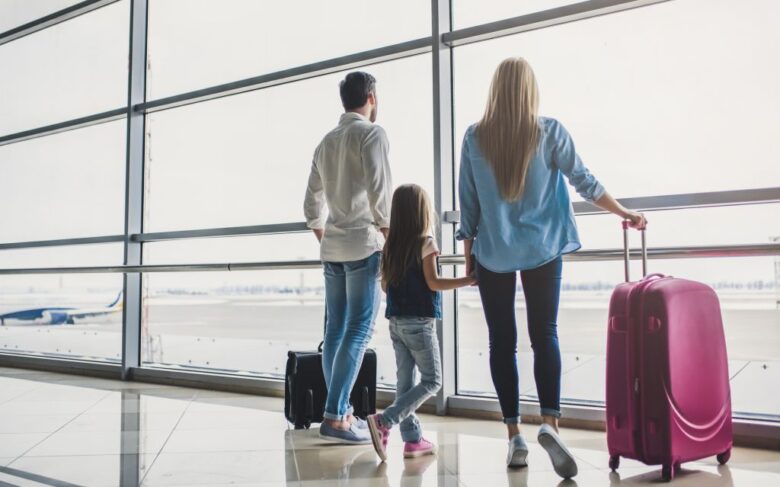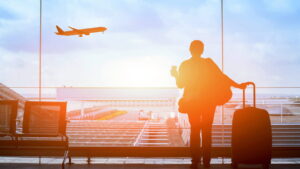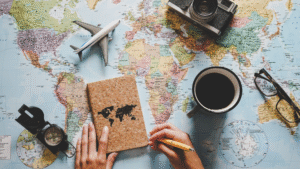Traveling is one of life’s greatest joys, but sometimes waiting at the airport and boarding a long flight can be a challenge. From long security lines to cramped seats, the journey itself can be more important than the destination. Planning ahead can make your trip less stressful and more enjoyable. This book offers practical airport and flight tips to make your next trip easier, so you arrive at your destination feeling relaxed and ready to explore the world.
Planning and Preparing for Your Flight
A smooth trip starts long before you even arrive at the airport. Planning ahead is the best way to avoid common travel problems. Book flights and accommodations in advance, especially during peak travel periods, to get the best prices and the options you want.
Once you’ve confirmed your reservations, it’s time to start packing. Make a list to ensure you don’t forget anything important. Packing light saves on administrative costs and makes getting around the airport easier and more convenient. Rolling clothes instead of folding them frees up space in your suitcase. Keep all your essentials in your carry-on, such as travel documents, medications, chargers, a change of clothes, and essential toiletries. This way, you’ll have everything at hand in case your checked baggage is lost or delayed.
Take a photo of your passport, ID, flight tickets, and hotel confirmation and save them digitally. You can use a travel app for this. Another excellent idea is to download your flight app. These apps provide real-time updates on gates, flight information, and electronic boarding passes, saving you time and paper.
Navigating the Airport Quickly
It’s easy to get lost at the airport, but here are a few simple ways to speed through customs. You have 24 hours to check in online. You can select your seat in advance and print or save your boarding pass, so if you only have carry-on luggage, you don’t have to go to the check-in counter in person.
Arrive at the airport early. It takes two hours within the United States and three hours outside the United States. This extra time is intended to accommodate delays due to traffic, security, or checked baggage. You can sign up for programs like TSA PreCheck or Global Entry, which offer faster security checks and can save you significant time.
After security, you can immediately find your gate. Once you know where you’re going, take a break and estimate how much time you have to get coffee or food. Airport maps, usually available on the airport’s website or app, list amenities like bars, charging stations, and restrooms.
In-Flight Comfort and Entertainment
While long flights can be physically demanding, you can take steps to make your trip more comfortable. Wear loose, breathable clothing in layers. Airplane temperatures can fluctuate, and layering can help you adjust. You can use a travel pillow, an eye mask, earplugs, or noise-canceling headphones to block out light and sound. This will help you get some rest.
Stay hydrated by drinking plenty of water and limiting caffeine and alcohol, as these can cause dehydration. Get up every few hours and walk around the cabin to stretch and prevent stiffness. Download music, movies, TV shows, and podcasts to your device for fun before your flight. Many companies offer in-flight entertainment, but choosing the right entertainment ensures you’ll find what you enjoy. Don’t forget a small power bank to keep your electronics charged during the trip.
Stay Connected and Get Work Done
Planning ahead can help you stay connected or work while you’re away. Many airports offer free Wi-Fi, but it can be slow or even unavailable. If you need a stable connection, use your phone as a personal hotspot or buy a day pass to an airport lounge, where Wi-Fi is often faster.
Many airlines now charge extra for Wi-Fi. If you need to work, buy a pass before your flight. Don’t forget to download any important documents or files before boarding, as the connection speed may not be quick enough for large amounts of data. To keep your electronic devices running, you’ll need portable chargers and power banks, especially on long flights where power outlets may be hard to find or even nonexistent.
Post-Flight Tips and Recovery
Your journey doesn’t end upon arrival. Clearing immigration and customs can take time, so make sure you have all your travel documents and required forms ready. Should you have checked luggage, please proceed to the baggage claim at your earliest convenience. Tie a brightly colored bow or tag to your luggage so you can easily find it.
Adjust to the local time as quickly as possible to avoid jet lag. If you arrive during the day, try to stay awake until the evening. Spending time outdoors in the sun can help reset your body clock. To help your body adjust, it’s important to drink plenty of fluids and eat light meals. Short walks or light exercise can also make you feel better and help you recover faster.
Smarter Trip Planning
You’ll travel better if you plan ahead and adopt some smart habits. Planning ahead, packing wisely, and making the most of technology will help you feel safe at the airport and during your flight. These tips will help you feel less stressed and more at ease and enjoy the exciting sights you’ll see.
FAQs
1. How do I get through airport security faster?
Enrolling in a trusted travel program, such as TSA PreCheck or Global Entry, is the most effective way to expedite your passage through airport security. If not, be prepared: put liquids in a clear bag, remove bulky items from your carry-on, and wear easy-to-remove shoes.
2. How do I prevent jet lag?
To prevent jet lag, start adjusting to your destination’s time zone a few days before departure. Drink plenty of water, avoid alcohol, and try to go to bed at the right time for your new destination. After arriving, make sure you get plenty of natural sunlight during the day and go to bed around the same time as everyone else.
3. Should I bring carry-on or checked baggage?
Carry-on baggage is generally faster and less expensive than checked baggage. This allows you to skip the baggage claim line and reduce the risk of lost luggage. However, if you need to take more than the allowed amount, you must check your luggage. Make sure you have everything you need in your personal belongings.
4. What should I pack for a more comfortable flight?
For extra comfort, we recommend bringing a travel pillow, a sleep mask, noise-canceling headphones or earplugs, and some warmth, such as a sweater or blanket. Compression socks are also ideal for long journeys to improve circulation.
5. How do I find the cheapest flights?
You can get better deals if you book your flight a few weeks or months in advance. You can find the best deals by comparing flight tickets on websites that offer this service. If possible, be flexible with your travel schedule. Weekday flights are generally cheaper than weekend flights.




